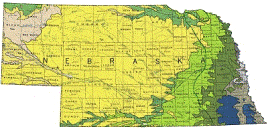United States Geological Survey

United States Geological Survey: Staff Publications
Document Type
Article
Date of this Version
2009
Abstract
Annually laminated (varved) Holocene sediments from Derby Lake, Michigan, display variations in endogenic calcite abundance refl ecting a long-term (millennial-scale) decrease in burial punctuated with frequent short-term (decadal-scale) oscillations due to carbonate dissolution. Since 6000 cal yr B.P., sediment carbonate abundance has followed a decreasing trend while organic-carbon abundance has increased. The correlation between organic-carbon abundance and the sum of March-April-October-November insolation has an r2 value of 0.58. We interpret these trends to represent a precession-driven lengthening of the Holocene growing season that has reduced calcite burial by enhancing net annual organic-matter production and associated calcite dissolution. Correlations with regional paleoclimate records suggest that changes in temperature and moisture balance have impacted the distribution of short-term oscillations in carbonate and organic-matter abundance superimposed on the precession-driven trends.


Comments
Published in Geology, August 2009; v. 37; no. 8; p. 695–698.